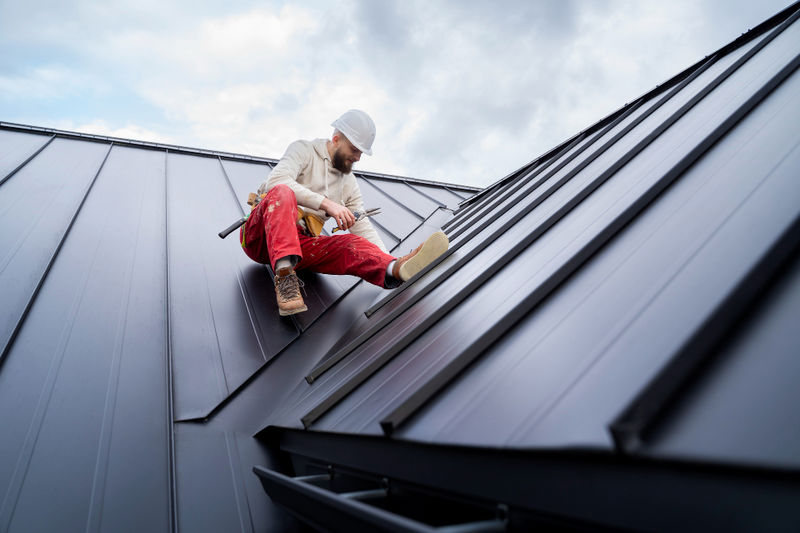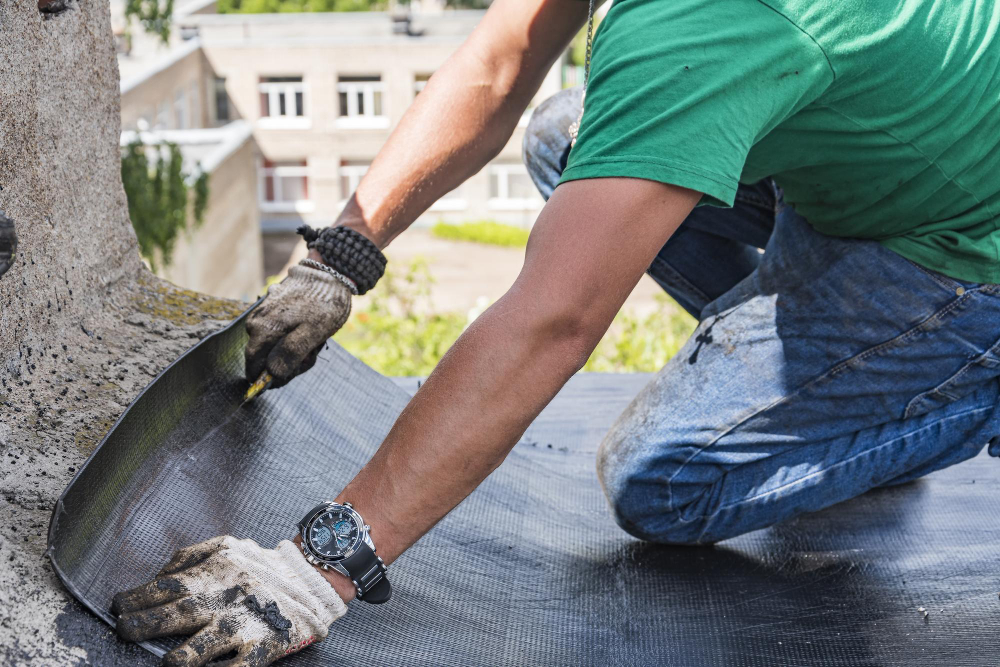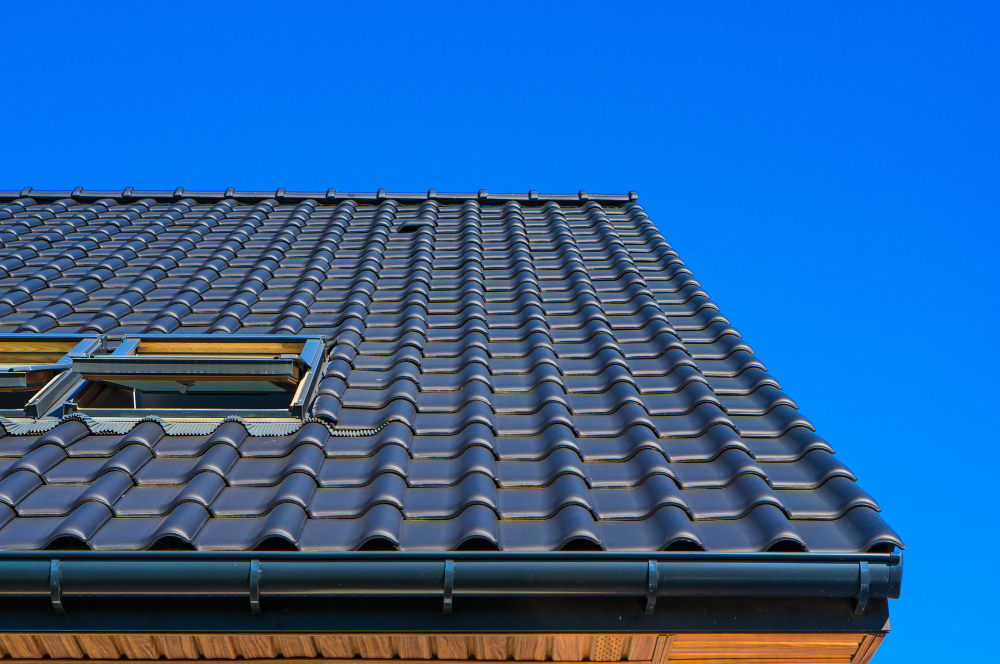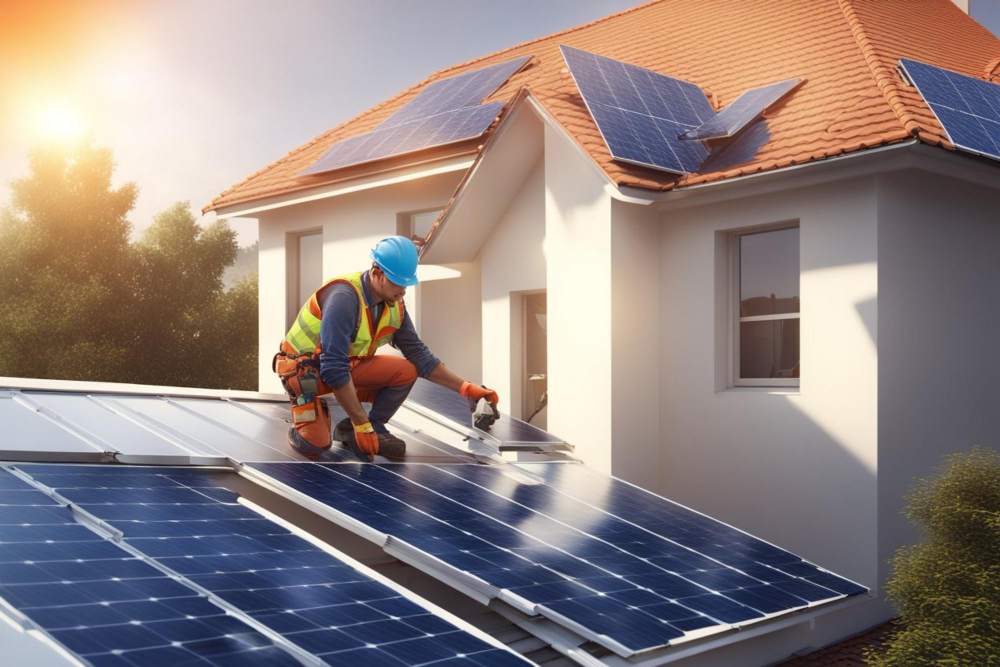“When is a simple repair sufficient? – Understanding the Scope of Roof Damage”
Roofs in Florida are constantly exposed to harsh weather conditions such as intense heat, heavy rain, and strong winds. Over time, this can lead to various forms of damage, including cracked shingles, leaks, and structural issues. When faced with roof damage, it is important to assess the extent of the problem to determine whether a simple repair is sufficient or if a complete replacement is necessary.
One key factor to consider is the size and severity of the damage. Minor issues such as a few missing or damaged shingles can often be easily repaired. In these cases, a professional roofing contractor can replace the damaged shingles and ensure that the rest of the roof is in good condition. However, if the damage is extensive, such as widespread leaks or significant structural damage, a repair may only provide a temporary solution.
Another consideration is the age of the roof. Older roofs are more prone to damage and may have reached the end of their lifespan. In such cases, even if the damage appears minor, it may be more cost-effective in the long run to opt for a complete roof replacement. This ensures that the entire roof system is updated and provides better protection against future damage.
Furthermore, it is essential to consider the overall condition of the roof. If the roof has experienced multiple repairs in the past and is showing signs of deterioration, it may be a sign that a replacement is necessary. Constantly patching up a damaged roof can become costly and may not provide a lasting solution. By opting for a replacement, homeowners can have peace of mind knowing that their roof is in optimal condition.
“Is it time for a change? – Deciding on Roof Replacement”
Replacing a roof is a significant decision that requires careful consideration. While repairs may seem like a more cost-effective option initially, there are instances where a roof replacement is the more practical choice. One important factor to consider is the frequency and severity of the roof damage. If repairs are becoming increasingly frequent or the damage is extensive, it may be a sign that the roof is reaching the end of its lifespan and replacement is necessary.
Additionally, the aesthetic appearance of the roof should be taken into account. Over time, roofs can become discolored, develop algae or moss growth, or simply appear worn out. If the overall appearance of the roof is detracting from the curb appeal of the home, a replacement can greatly enhance its visual appeal and increase the value of the property.
Moreover, advancements in roofing materials and technology should also be considered when deciding on a roof replacement. Newer materials, such as energy-efficient shingles or solar panels, can offer improved durability, energy savings, and environmental benefits. Upgrading to these materials during a replacement can provide homeowners with long-term cost savings and a more sustainable roofing solution.
Another factor to consider is the potential for hidden damage. Sometimes, roof issues extend beyond what is visible on the surface. If there are concerns about the underlying structure or moisture damage, a replacement allows for a thorough inspection and the opportunity to address any hidden issues before they become more severe.
“The Financial Factor: Analyzing the Cost of Roof Repair vs. Replacement”
When considering roof repair versus replacement, one of the most crucial factors to evaluate is the financial aspect. Repairing a roof is generally the more affordable option in the short term, as it typically involves fixing specific issues and addressing immediate concerns. However, it is essential to assess the long-term costs and benefits.
Repeated repairs can add up over time, especially if the roof is aging or experiencing frequent damage. Homeowners should consider the cumulative expenses of multiple repairs versus the upfront cost of a replacement. While a roof replacement may require a larger initial investment, it can provide a more cost-effective solution in the long run, as it eliminates the need for ongoing repairs.
Moreover, homeowners should take into account the potential for future repairs after addressing the current damage. If the roof is reaching the end of its lifespan or exhibiting signs of significant deterioration, a replacement might be a more financially prudent choice. By investing in a new roof, homeowners can avoid the expenses of frequent repairs and enjoy the peace of mind that comes with a durable, long-lasting solution.
Insurance coverage is another factor to consider. In some cases, insurance policies may only cover the cost of repairs up to a certain extent. If the damage is extensive, homeowners may need to cover the remaining expenses out of pocket. However, insurance policies may provide more comprehensive coverage for a roof replacement, reducing the financial burden on the homeowner.
Finally, homeowners should evaluate the potential return on investment. A new roof can enhance the value of a property, improving its marketability and potentially increasing its resale value. In contrast, a roof in poor condition can be a deterrent to potential buyers and may negatively impact the overall value of the home.
“Florida’s Unique Climate: How Does it Influence Your Decision?”
Florida’s unique climate plays a significant role in the decision-making process when it comes to roof repair versus replacement. The state experiences high humidity, intense heat, heavy rainfall, and the occasional hurricane. These environmental factors can have a substantial impact on the lifespan and durability of a roof.
Firstly, the high humidity levels in Florida can accelerate the deterioration of roofing materials. Moisture can seep into cracks and crevices, leading to the growth of mold, mildew, and rot. This can compromise the structural integrity of the roof and require frequent repairs. In some cases, a replacement may be necessary to ensure the roof can withstand the constant exposure to moisture.
Additionally, Florida’s intense heat can cause roofing materials to expand and contract, leading to cracks and damage over time. UV radiation from the sun can also degrade the integrity of the roof, especially in the case of older or worn-out materials. Homeowners should consider the age and condition of their roof when evaluating whether repair or replacement is the best option to withstand the demanding Florida climate.
Furthermore, Florida’s unpredictable and sometimes severe weather, including heavy rainfall and hurricanes, can put significant stress on a roof. Even a small existing issue can quickly escalate during a storm. Homeowners should assess the potential risk of further damage and consider whether a repair would adequately address the vulnerability of their roof or if a replacement would provide a more secure solution.
Roof Repair vs. Replacement: Making Informed Decisions in Florida:
| Option | Age of Roof | Cost | Challenges |
|---|---|---|---|
| Repair | Less than 10 years | Less than $1,000 | Inconsistent weather |
| Replace | More than 10 years | More than $5,000 | Cost of materials |
| Repair | Less than 5 years | Less than $2,000 | Absence of leaks |
| Replace | More than 20 years | More than $10,000 | High winds |
While both roof repair and replacement have their own advantages and drawbacks, the best decision depends on the specific circumstances of each case. Factors such as the severity of damage, the roof’s age, and budget constraints are vital in making an informed decision. Homeowners in Florida are advised to consult with professionals, considering the unique challenges posed by the state’s climate, to ensure their homes are adequately protected.








